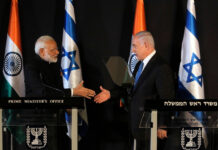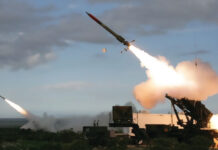The Al Qaeda wing in Yemen claimed responsibility for the attempted bombing last week of a Northwest Airlines flight. The group, known as Al Qaeda in the Arabian Peninsula (AQAP) is the latest reincarnation of Islamist militant cells that have been active in Yemen for years. With an estimated 2,000 militants and sympathizers exploiting the country’s economic and political chaos AQAP has created a powerful training and operations base, for jihad activities at the edge of the Persian Gulf and the Horn of Africa.
The growth of Al Qaeda’s wing in Yemen and its selection of high-profile targets are partly the result of militants regrouping in the Arab world’s poorest country as the U.S. military has put pressure on Al Qaeda in Afghanistan and Iraq. Indeed, as the United States steps up the hunt for Al Qaeda in Afghanistan and Pakistan, some of the terrorist network’s veteran operatives are leaving the region and flocking to Yemen, where an escalating civil war is turning the nearly lawless Arab nation into an attractive alternative operational base.
Yemen’s unrest, including a secessionist movement in the south and a civil war in the north, has given Al Qaeda an ideal hub, especially in rugged rural and tribal regions where the government reach is limited. For five years, Shia fighters from the powerful Houthi clan have led an armed rebellion against the Sunni government in Sana’a. Dug into mountain bases, the rebels, estimated at between 5,000 to 10,000, have waged guerrilla insurgency in a conflict which has killed thousands and displaced more than 175,000. The so-called, Tehran sponsored ” Houtis war” has not only turned the already mostly lawless nation into an economic chaos, but also created an inter-religious clash between Iranian Shiites against Sunni Yemen, even drawing Saudi Arabia, the self-proclaimed “Guardian of Sunna” into the turmoil. Analysts warn that the Houti War in Yemen could become the prelude of Shia-Sunni conflict over Iraq, once President Obama’s strategy to withdraw US forces will leave that country in bloodshed.
But there is more at stake. Al Qaeda in the Arabian Peninsula has already transformed itself from a regional threat into what western intelligence see as the network’s most active affiliate outside Pakistan and Afghanistan with global ambitions. The botched attack on the Detroit bound Northwest Airline, could signal the start of a new offensive by al Qaeda.
An imminent danger is building up at one of the most strategic waterways in the Middle East. Yemen, at the tip of the Arabian Peninsula, straddles a strategic maritime crossroads at the Red Sea and Gulf of Aden, the Bab el Mandeb strait – the access point to the Suez Canal. Across the gulf is lawless Somalia, an even more tumultuous nation where the United States has said al-Qaeda militants have been increasing their activity.
A rather strange development has actually helped to build al Qaeda’s power base in Yemen. Following President Obama’s orders to dismantle the Prison in Guantanamo Bay, Cuba some of the world’s most notorious terrorist leaders were set on free foot. Several of these did not waste time and flew to the new safe haven in Yemen, joining their comrades, having escaped the NATO hunters in Afghanistan and Pakistan.

 Several of the leading Al Qaeda figures now in Yemen were released from Guantanamo. An example is Ibrahaim Suleiman Al Rubaish (seen in the image on the left), one of the groups’ leading religious ideologues, who is affectionately known as the “poet of Guantanamo’. Rubaish was captured by the Pakistanis in 2001 and transferred to the Americans.
Several of the leading Al Qaeda figures now in Yemen were released from Guantanamo. An example is Ibrahaim Suleiman Al Rubaish (seen in the image on the left), one of the groups’ leading religious ideologues, who is affectionately known as the “poet of Guantanamo’. Rubaish was captured by the Pakistanis in 2001 and transferred to the Americans.
He was detained in Guantanamo for five years, until December 2006, when he was retured to Saudi Arabia for a ‘ rehabilitation for Jihadists’ program. As could be expected, Rubaish escaped and fled to Yemen where he is now operates. Another Guantanamo detainee, Said Ali al Shihri, is now the deputy of al Qaeda in the Arabian Peninsula. (Shihiri is seen in the photo below)
Yemen’s location next to oil-rich Saudi Arabia, where Al Qaeda has been trying to overthrow a government it sees as illegitimate protectors of Islam’s holiest sites, is also a central attraction for jihadists.
Since then, the organization has joined extremists situated in Yemen and Saudi Arabia under the leadership of Nassir Abdel-Karim Wahishi (photo on the left), a Yemeni with close ties to Osama bin Laden. Wahishi’s second in command is Saeed Ali Shehri, a Saudi national who, who upon his release from the U.S. military prison at Guantanamo Bay, Cuba, in 2007, already went through a rehabilitation program in the kingdom.
 As for the Northwest Airlines flight incident. This foreshadowed the jetliner plot by revealing al Qaeda’s focus on using concealed explosives to circumvent security measures. In a little publicized incident, that happened last August, the group used an elaborate ruse, with an extremist cell plotting to assassinate Prince Muhammad bin Nayef, Saudi Arabia’s security chief.
As for the Northwest Airlines flight incident. This foreshadowed the jetliner plot by revealing al Qaeda’s focus on using concealed explosives to circumvent security measures. In a little publicized incident, that happened last August, the group used an elaborate ruse, with an extremist cell plotting to assassinate Prince Muhammad bin Nayef, Saudi Arabia’s security chief.
But then, the Pentagon should not have been surprised. Yemen’s Al Qaeda wing had already startled Washington back in 2000 when a motorboat packed with explosives slammed into the U.S. destroyer Cole in the port of Aden, killing 17 sailors. Al-Qaeda has attempted to use PTEN compounds to blow-up airplane for several years. This type of explosive material was used in 2001 by Al-Qaeda member Richard Ried, in an attempt to blow up American Airlines Flight 63 from Paris to Miami. Ried concealed the explosive device in his shoes. More recently this compound was integrated into a new device known as the ‘underwear bomb’, where explosives and primers are sewn into pockets concealled inside the bomber’s intimate areas. It was first used by a Saudi militant, who flew from Yemen to Jidda, Saudi Arabia, for a meeting with the prince. The assassin got through airport and palace security with the device undetected. Some reports claimed the explosive device was inserted into his body, similar to drugs being smuggled through airports. The explosive was triggered by a telephone call from Yemen as he was meeting his target, killing him but only wounding the prince. PTEN was also the material that Umar Farouk Abdulmutallab of Nigeria is accused of concealing in his underwear in the plot to destroy the Detroit-bound Northwest plane.
Yemen’s government, meanwhile, appears to be mounting a serious and aggressive campaign against al-Qaeda after years of treading carefully with the militants. Last week’s attack targeted a meeting of Yemeni and foreign al-Qaeda operatives believed to include the top leader of al-Qaeda in the Arabian Peninsula, Naser Abdel-Karim al-Wahishi, and his deputy, Said al-Shihri. Although reports indicated that several top al Qaeda leaders were among the victims, among them al-Wahishi and al-Shihri, however, their demise has yet to be confirmed. While al-Qaeda’s planning and operations epicenter still remains the Afghanistan-Pakistan mountain borderlands. But the hard truth, that western counter-terrorist agencies will have to face, is that the fight against Islamic extremism will have to be waged on multiple fronts.

















